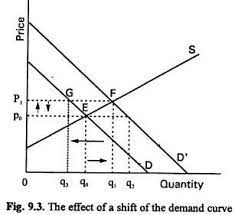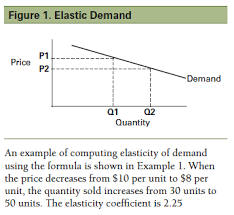Introduction
Research Question: How does the pearl industry cause shifts in demand and supply, demand elasticity, and externality in Australia?
Pearls are found in mollusks or oysters, and they are grown in limited areas of the ocean. They exist in different colors and shapes, and their prices are dependent on various factors, but the main one is the perfection of the stone. The production of saltwater pearls has experienced a global expansion in the last several decades, and this is because of the high increase in the black pearls supply. This increase in supply has, in turn, resulted in lowering the prices of pearls in different parts of the world. The pearl industry has experienced tremendous change in the last fifty years because the industry no longer depends on the wild catch but on the culture of oysters. Evidently, these changes are also the result of major technological advances of leading nations and the impact of globalization. In Australia, the production is highly reliant on the culture of Pinctada maxima, but another culture that occurs is that of the black-lipped pearl oyster Pinctada margarita. As the history of the pearl industry suggests, Australia has played a crucial role in developing the business. The cultivation and collecting of the gemstone have been perfected over the last century to fit in with the socioeconomic state of the nation while also promoting international trade. Most importantly, methods of cultivation have been modified as well, as experts learned to stimulate the production of pearls inside mollusks. Hence, the processes involved in the natural collection and cultivation of pearls can be challenging in terms of natural and technological resources. This paper will focus on the various economic effects that the pearl industry has on the economy of Australia and the models chosen for this topic shift in demand and supply curves, demand elasticities, and externalities on the economy of Australia.
Concepts and Model
This paper has focused on the models of shifts in demand and supply curves, demand elasticities, and externalities. The demand and supply models essentially outline the relationship between the buyers’ demands and the value of a product, usually measured by its quantity and prices. In relation to shifts in demand and supply, the new technologies used in the cultivation of pearls have had a great impact on the economy of Australia, and the major one is the shifts in demand and supply curves in the country (Millitz et al., 2021). These refer to a situation where the number of goods demanded or supplied changes, even after the price remains the same. External factors such as regulations and government taxes, technological advancements, and natural resources evidently influence the occurring shifts.
The gradual changes in pearl demand and the relationship between buyers and sellers have resulted in variations in prices and the involvement of third parties in the business models. Externalities happen when an exchange between a seller and a buyer impacts a third party who is not part of the exchange. The externalities, costs, and benefits are not reflected in the free market prices (Poirine, 2013). Therefore, they are mainly referred to as the third-party impact of the industry. The producers or consumers impose the benefits or costs on other people who are not part of the responsibilities for initiating the impact. Externalities have been initiated and experienced outside the market. The Pearl industry has played a great role in extending growth and development to remote marine communities. These communities are neither buyers nor sellers in the pearl industry. These societies enjoy the social and economic benefits of the pearl industry.
Demand elasticity refers to a variation in a product’s demand. The Pearl industry has grown, and this has increased its demand throughout the globe, allowing for global penetration. People buy goods or services depending on their needs and abilities (Johnston et al., 2013). When prices reduce, the demand will increase, and the opposite will occur if prices increase. The concepts of demand elasticity refer to the level of responsiveness of the amount of quantity demanded in relation to a price change of the item. In the Australian pearl industry, the price elasticity of demand has resulted in an increase in global consumption due to reduced cost (Shor, 2017). The increased supply of pearls in Australia has resulted in a reduction in prices and hence, an increase in demand in and outside the country (Southgate et al., 2019). Since pearl prices have gone down with time, this has played an essential part in increasing its demand. Australia is the leading exporter of white pearls in the global market. The country has a market share of 23%, ranking second after Japan’s Akoya pearls, which have a market penetration of 26% (Kishore et al., 2018). Significant development of the pearl industry’s global impact and export are the major consequences of demand elasticity.
Analysis
Shifts in Demand and Supply Curves
In Australia, changing technology causes shifts in demand and supply curves. This allows for the efficient production of goods and services, not only in the pearl industry (Johnston et al., 2020). Consequently, the relationship between the modern advancements associated with an increased industry growth rate and the demand curve can be illustrated through a graph (Figure 1).

Paspalet became the founder of the pearl industry as a result of their great expertise in the field. Due to this, he was able to use the Japanese experience and personnel to develop technologies that would improve the culturing of oysters (Shor, 2017). Then, changes also happened in the wild’s harvesting process (Southgate et al., 2019). These technological evolutions have allowed the industry to be more capital-intensive in Australia.
The changes in technology in the culturing and production of oysters have resulted in positive economic growth in Australia. Technology allows a company to save time, resulting in increased profits (Southgate et al., 2017). Technology allows for the specialization of work in the industry and increases job opportunities.
Externalities
The marine communities, who are neither buyers nor sellers, view pearls as their saving grace, especially because they can be stored easily and have a high value in relation to their weight (Johnston et al., 2019). The pearl industry in Australia is located in the residence of the Australian Aborigines, and they have significant involvement in the industry (Kishore et al., 2018). These communities usually go unnoticed by the Australian government during the allocation of resources and have minimal or no development, which makes their lives hard.
Australian Aborigines have been in the country for decades, and none of them owns the land, despite their high populations. The land for pearl forms is owned by the land council or traditional owners, who lease it out to the pearl companies (Militz et al., 2021). The pearl industry has extended development to the indigenous community, improving their livelihoods. The industry employed about 400 people in the Northern Territory in 2004 (Poirine, 2013). In West Australia, the industry had about 1,500 direct employees from the marine communities (Southgate et al., 2017). To date, the industry may have employed about 3,000 indigenous people in northern Australia (Shor, 2017). The indigenous community has benefitted greatly from the pearl industry.
Demand Elasticity
Australia has gained global recognition that has opened doors for other industries to export their products globally (Militz et al., 2021). Increased exports have helped in the significant growth of the Australian economy (Johnston et al.,2020). A trade surplus appreciates the economy, and it only happens when the factories have high outputs and high numbers of employed people. The elastic demand relationship between price values and demand can be presented graphically (Figure 2).

Conclusion
In conclusion, the pearl industry has affected the Australian economy in various ways. The gradual changes resulted from historical and economic advancements that have shaped the Australian community. The major effects include the changing technologies that have helped improve the business output rate and increase employment opportunities, hence improving the economy. The evaluation of the demand and supply curves demonstrated the microeconomic impact of the industry. Changes in demand and supply could be reported that ultimately resulted in price variations of the product. Moreover, increased demand for pearls resulted from the introduction of their lower prices in Australia. Analysis of externalities and demand elasticities highlighted the role of marine communities in the development of the business. The pearl industry has helped extend development to remote marine areas, which get minimal or no recognition from the national government. Empowering the indigenous communities has helped in the general growth of the economy. Lastly, the pearl industry has helped the country penetrate the global markets. Despite the sudden increase in demand, the consequential sales across the world proved to be extremely beneficial. Global recognition has helped the country increase its exports, which has aided in the general growth of the economy.
Bibliography
Johnston, B., Kishore, P., Vuibeqa, G. B., Hine, D., & Southgate, P. C. (2020). Economic assessment of community-based pearl oyster spat collection and mabé pearl production in the western Pacific. Aquaculture, 514, 734505. Web.
Johnston, B., Hine, D., Kishore, P., & Southgate, P. C. (2019). Cost–benefit analysis of two culture methods that influence pearl production from the black‐lip pearl oyster, Pinctada margaritifera. Journal of the World Aquaculture Society, 50(3), 510-521. Web.
Kishore, P., Vuibeqa, G. B., & Southgate, P. C. (2018). Developing a national spat collection program for pearl oysters in the Fiji Islands supporting pearl industry development and livelihoods. Aquaculture Reports, 9, 46-52. Web.
Militz, T. A., Kershler, D. A., & Southgate, P. C. (2021). Informing Artisanal Pearl and Pearl-Shell Handicraft Production for the Cruise Tourism Market Through Analysis of Intended Purchase Behavior. Tourism in Marine Environments, 16(1), 45-58. Web.
Poirine, B. (2013). Managing the commons: an economic approach to pearl industry regulation. Aquaculture Economics & Management, 7(3-4), 179-193. Web.
Shor, R. (2017). From single source to global free market: the transformation of the cultured pearl industry. Gems & Gemology, 43(3).
Southgate, P. C., Kishore, P., Sharma, S., & Simos, T. (2019). Empowering women through pearl industry-based livelihoods in Fiji. SPC Wom. Fish. Inf. Bull, 29, 24-29.
Southgate, P. C., & Southgate, P. (2007). marine pearl industry. Pearl oyster health management: a manual, (503), 7. Web.